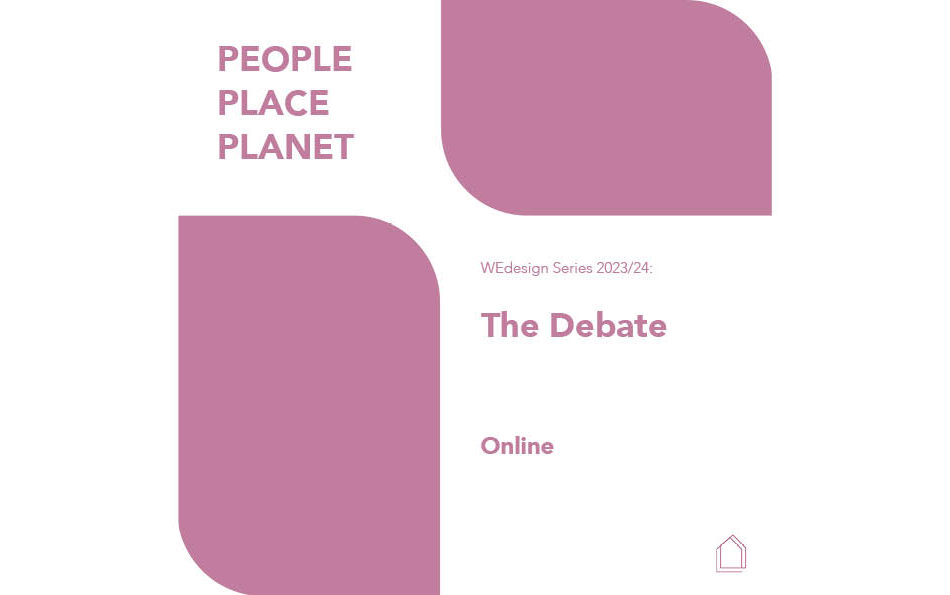Written by:
Last week our 2023/24 WEdesign series kicked off with our opening event, People, Place, Planet: The Debate. We were joined virtually from across the UK, by a range of participants with varied interests, diverse professional backgrounds and students.
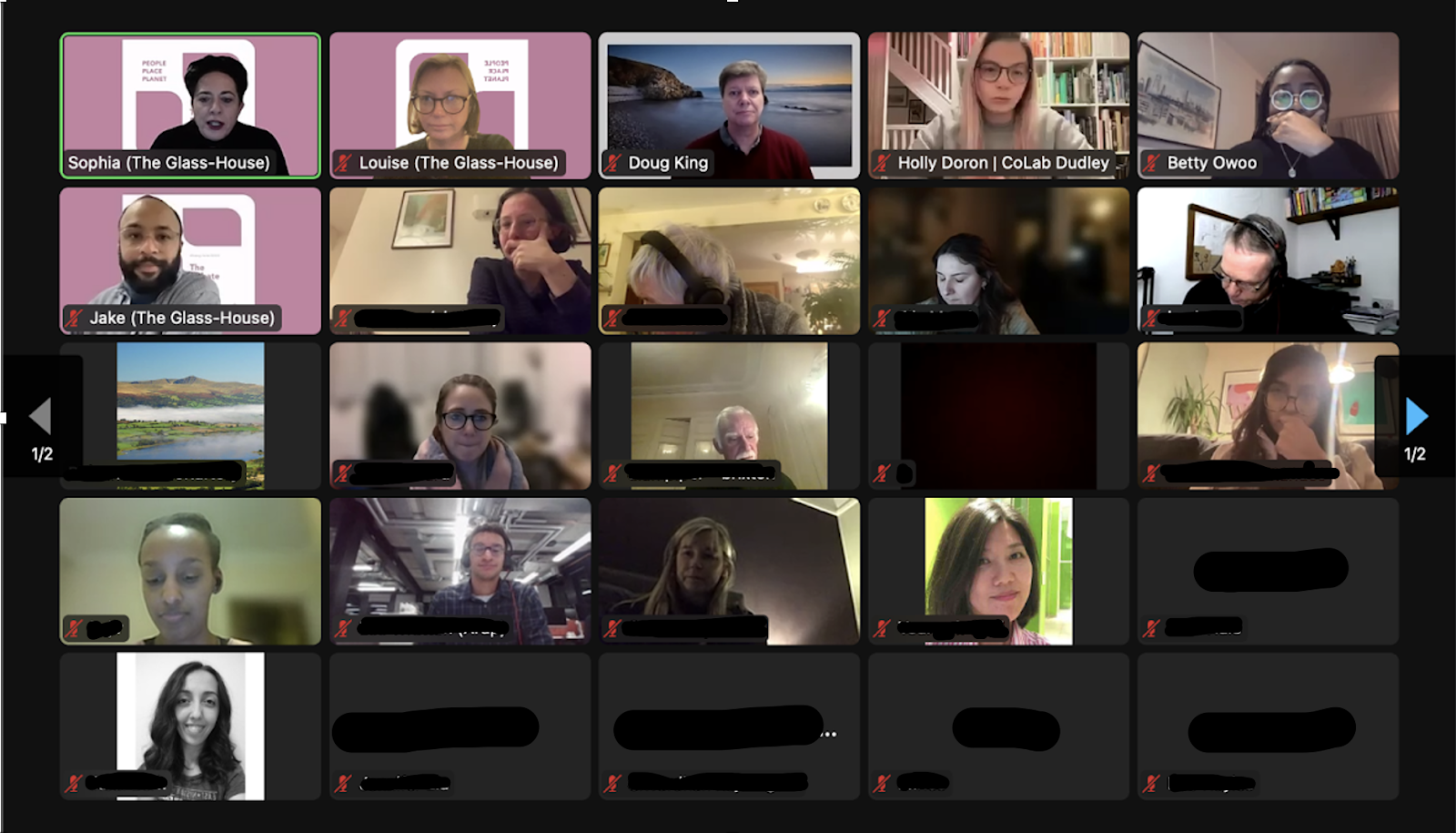
Using the theme of People, Place, Planet as our starting point, we invited three speakers to offer their provocations and thoughts as part of a series of five-minute presentations. This was followed by a stimulating and thought-provoking discussion with generous contributions and opinions from the event attendees.
Tackling the Inefficiency of Cities
Doug King was our first speaker and he asked participants to consider energy consumption and how our current system of working in one location and living in another is ‘vastly inefficient’, as most of our buildings are empty half of the time.
Doug, who is an engineer specialising in urban energy master plans and resource strategies, explained how the pattern of living away from where you worked, harked back to when we had a large industrial presence in cities and the places where people worked were smelly, dirty and polluted. At this time fossil fuels were in abundance, so the energy efficiency of this practice was not questioned.
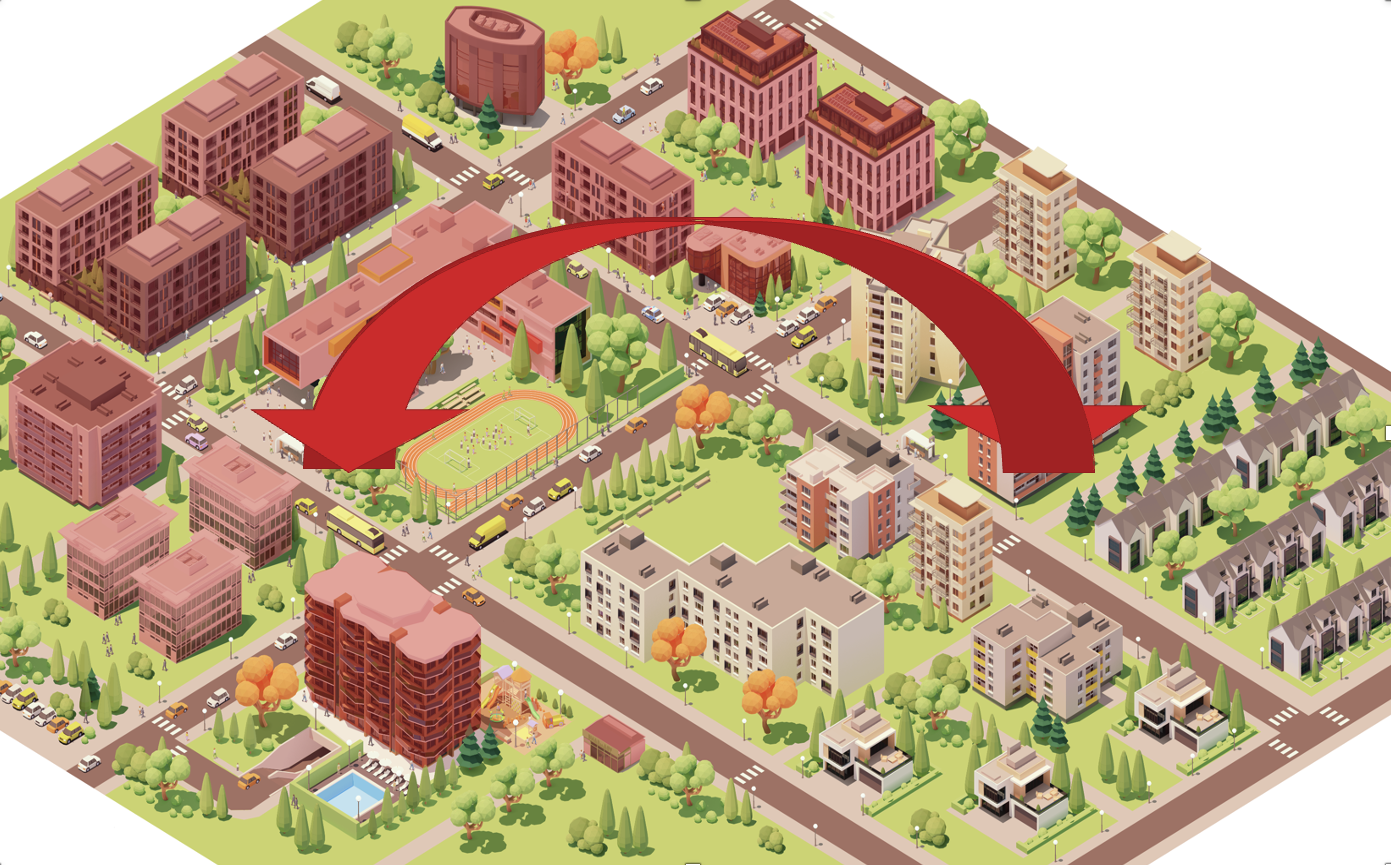
The idea was created that people lived away in Metro-lands, suburban locations which were served by transport systems.
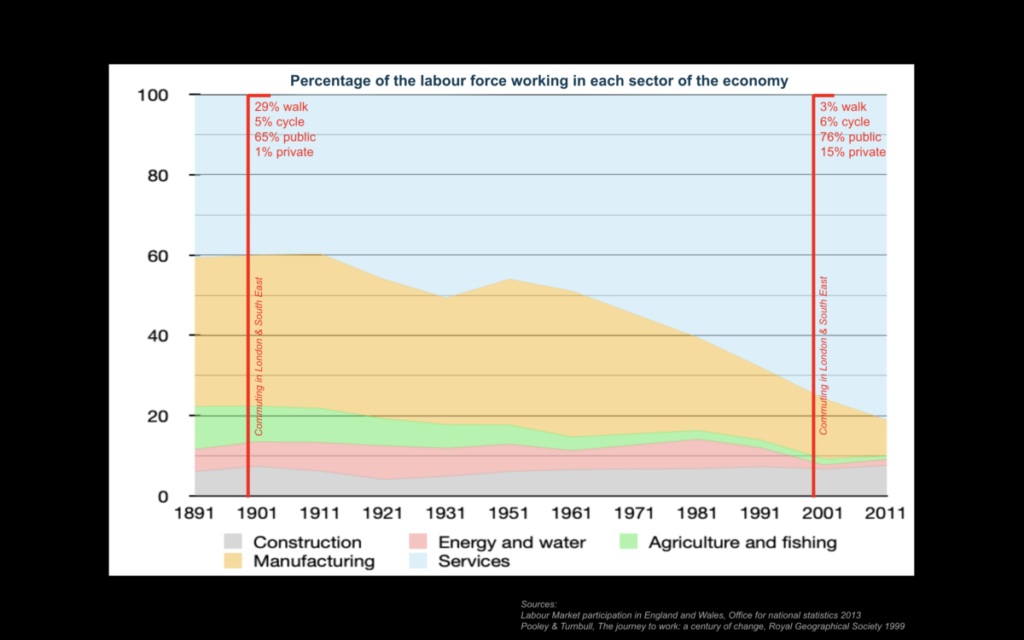
Sources:
Labour Market participation in England and Wales, Office for national statistics 2013
Pooley & Turnbull, The journey to work: a century of change, Royal Geographical Society 1999
Doug’s provocation was that this pattern of living/working, and most of us travelling at the same peak rush hours, is still prevalent now, putting pressure on and creating inefficiencies in transport, social and energy infrastructures, even though our city centres are not industrial anymore. He spoke about the efficiency of co-location and places having a mix of residential and commercial properties where people live and work in one location. Could this be the answer to the massive ‘daily tidal flow of humanity washing through our cities’?
Embedding People in Design
‘The City is fundamentally unwell and we are living in places that exist to serve capital’ was the provocation offered by Betty Owoo, who focused on what cities would look like if we embedded people in the design process. Betty is a spatial designer and currently works for Be First as an educational designer focusing on social housing and regeneration projects at Barking & Dagenham Council. Betty passionately spoke about current built environment projects which ‘speak more of greed than civic values’.
Betty explained that her ‘cure’ was about giving power to the people and talked about this power being underpinned by three things: Care, The Right to the City and Commons – shared resources. All linked together by sustainability.
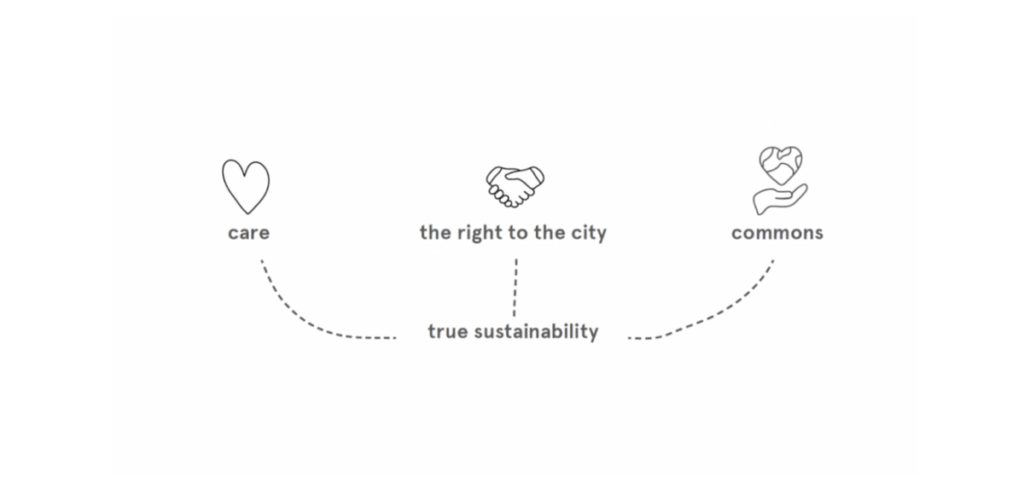
Betty’s suggestion for ‘a cure’ to the sickness of the city references Sherry Arnstein’s Ladder of Participation as a useful framework to discuss participation within the built environment and bringing people into the design process.
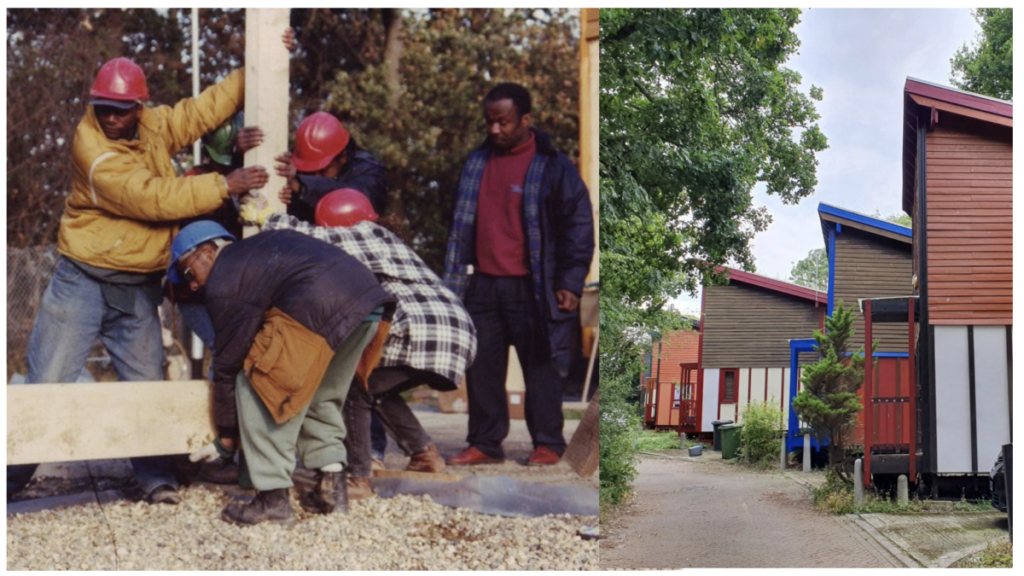
Wrapping up her provocation, Betty showed some great examples of projects which enabled community voices to be in the design process, including People’s Plan for the Royal Docks in the 80’s, an alternative view of community-led development which focused on putting people’s needs and aspirations at its heart. She also referenced Nubia Way, which was London’s first black-led housing co-operative in Lewisham, where residents were offered long-term discounted rents in return for building the homes.
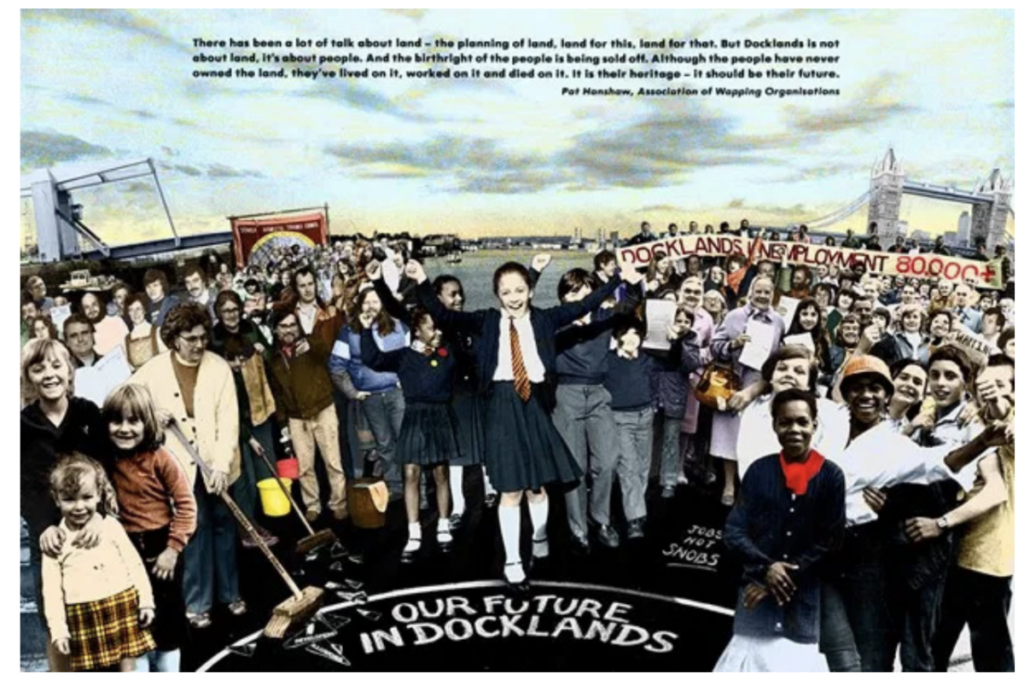
As Betty suggested,
‘Perhaps we can prioritise care, equity, generosity, conviviality, justice and joy?’
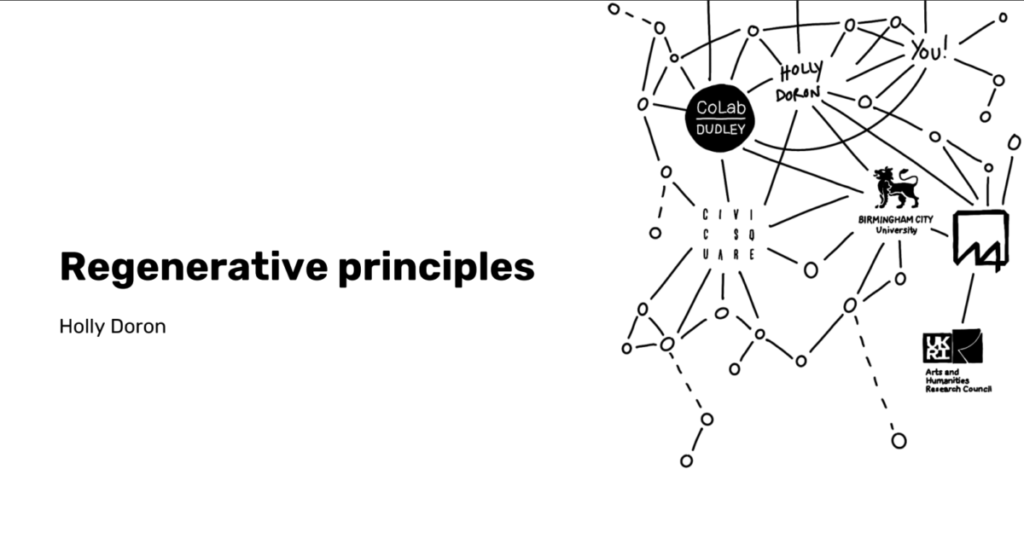
Exploring Regenerative Principles
Holly Doron rounded up our panel of speakers with a provocation about being regenerative and moving beyond sustainability to actively contributing to the health of the planet. Holly, who is an architect based in Dudley, with a background in participatory design and teaching, spoke passionately about her 5 regenerative principles, which address how we can make a positive impact and actually reverse some of the damage we have done to the planet.
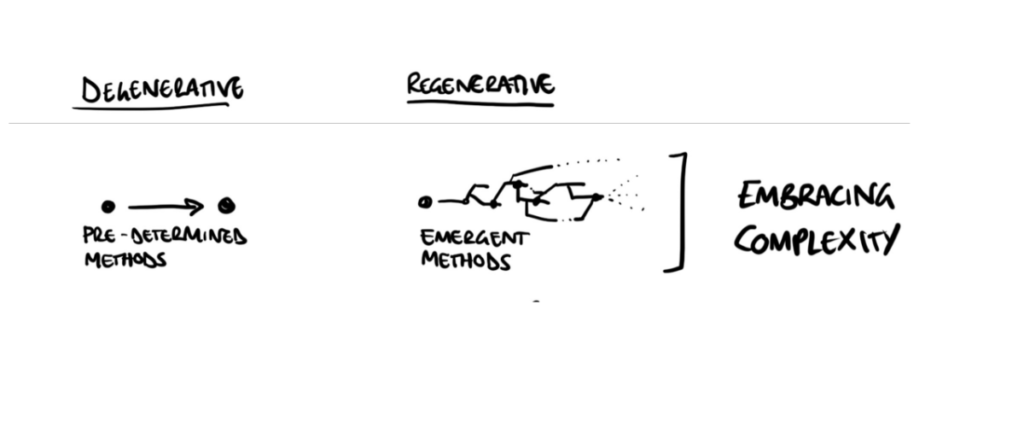
These were:
- Embracing complexity
- Being in relation to place
- Maintaining criticality
- Imagining and acting collectively
- Being accountable across time
She also posed a question to the participants – asking if and how you might adapt these principles to their areas of work/interest.
Whilst detailing her principle around embracing complexity, Holly spoke about the positives of being a bit messier, letting go of the desire to be perfect, paying attention to how we do things, not just the end point.

Holly championed genuine co-creation and “not being done to but with”, harnessing people’s skills, experience and creativity, making sure they are valued equally within the process. She also spoke of seeing ourselves as part of nature and connecting & emulating natural processes within our designs and how we live our lives. Her final principal was about the potential of being accountable across time and embracing long term futures, imaging future collaborations and allowing room in our work for this. Not just seeing our work as stand alone projects but as transitional and connected and asking ‘how will our actions today affect generations in the future?’
More information about Holly’s regenerative research practice can be found on her blog here.
A Lively Discussion
Our debate chair, The Glass-House Chief Executive Sophia de Sousa, then opened the discussion to the participants in the room, who contributed with wide ranging comments, opinions, thoughts and viewpoints.
One of our participants noted in response to Doug’s provocation that ‘a way of making a more environmentally friendly city centre, or any place of populace, is that you make environmentally friendly & cheap Public Transport’
‘Co-design is alive and there are lots of people who want to take part’, noted one of our participants,
He went on to say that his…’concern is ownership by those who don’t have an interest in change. They benefit from the status quo…How do we get them to release this control?’
In response to Holly’s provocation, another participant commented that she was interested in how ‘embedding more uncertainty….would be an interesting challenge, especially in a local authority context’
Another participant commented on their ‘frustration in practice – not having enough time or resources for meaningful co-creation.’ The desire to work collaboratively with people in the design process is there, it’s just not supported within the current systems.
An attendee from Citizens with Experience talked about equity within the built environment for people with both invisible disabilities and visible disabilities. He spoke about how he uses a social contract when collaborating with other people, which ‘moves at the speed of trust’. As someone who audits spaces for outliers, he commented that ‘If you are designing for the outlier, you are designing for everyone’.
One comment came from an attendee who agreed with the benefits of co-design but wanted to know ‘How can we encourage and support effective and proper actions?’
Another participant added a question in response to Betty’s provocation about the UK context: how much of our ‘city’s sickness‘ is ‘because of neglect that in turn is a result of squeezed public sector (civic) resources for the majority of the last 40 years?’
These are just a few threads of conversation, questions and discussion which took place as part of this debate, and it was great to see positive examples that were shared of how we could ensure there is balance between People, Place and Planet, as well as looking at what happens when the balance is unequal. Echoing our previous WEdesign season theme, it was evident from our discussions that current systems which exist in the built environment and indeed in society don’t seem to be working and need to be ‘unlearned’. There is a growing call from the sector and beyond to find new ways of doing things in order to start to rebalance and make things more equitable. Working with people and the natural world, instead of prioritising profit and developing the built environment in a ‘one size fits all’ approach, might yield better results. .
All of our speakers talked about collaboration and the collective in some aspect, whether that be co-location, co-creation, or co-design, and the participants in the debate did not need convincing that equity, doing with, not doing to, and putting people and nature at the centre of the built environment would make a huge change.
What Next?
We were however left with questions about next steps and how people can evidence this approach and convince the policy makers, developers and financiers that this balanced approach is the way forward within placemaking and the built environment.
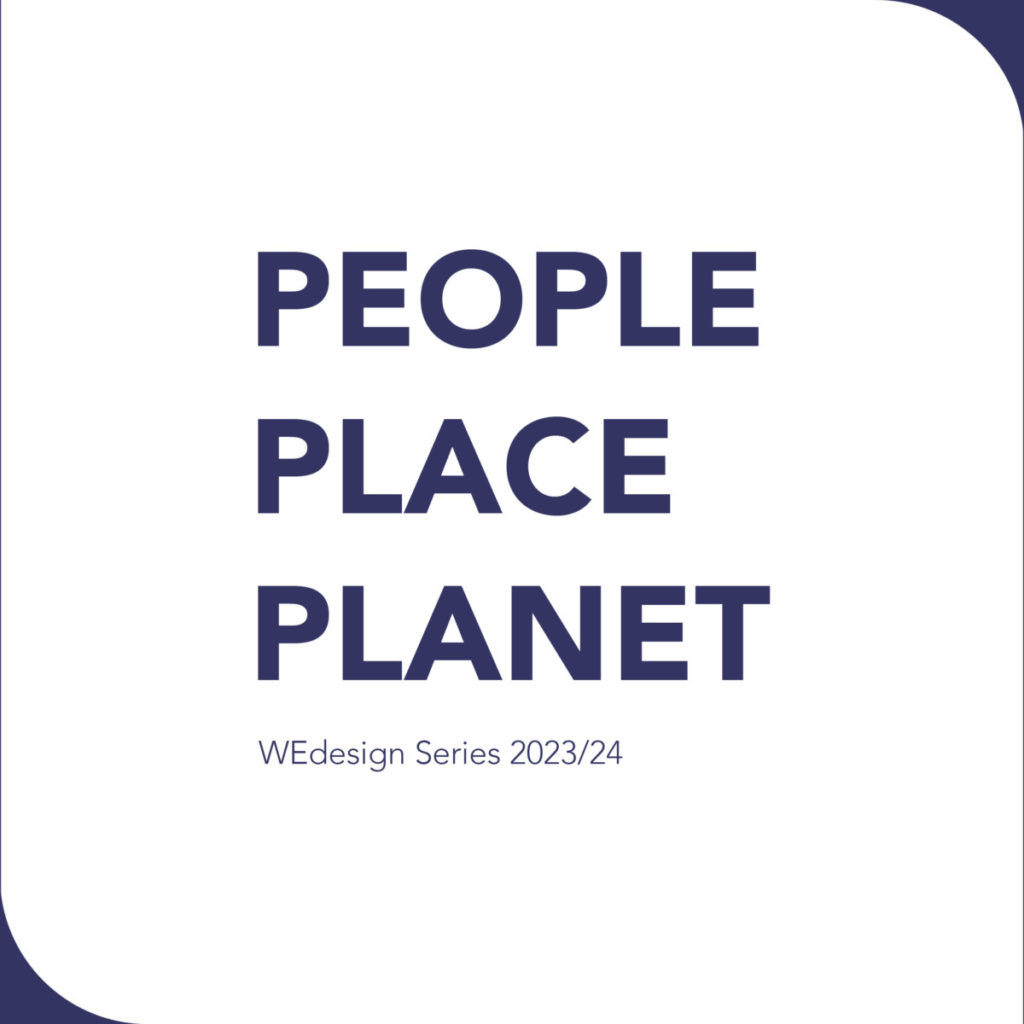
We encourage people to join our upcoming in-person events in London, Sheffield, Glasgow and Newcastle, where we will not only be exploring these themes and more, but also actively working together to co-design propositions for positive change.
People, Place, Planet: The Debate – Audio recording
If you were unable to join us at People, Place, Planet: The Debate, we have included a recording of the event which we hope you will enjoy listening back to.
More information about our live events and details about how you can book can be found here.

